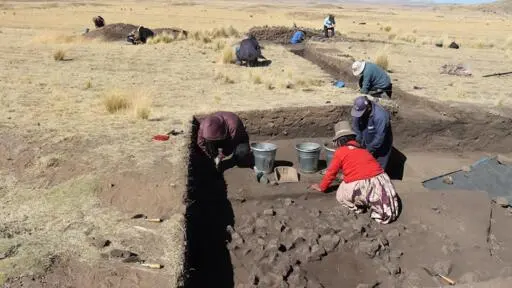Study Suggests Remembrances of Dead Played Role in Rise of Architecture in Andean Region
Study Suggests Remembrances of Dead Played Role in Rise of Architecture in Andean Region

Study Suggests Remembrances of Dead Played Role in Rise of Architecture in Andean Region

Archaeologists have long thought that monumental architecture — large, human-built structures that emphasize visibility — were products of societies with power structures, including social hierarchy, inequality and controlled labor forces. But this notion is being questioned as researchers uncover evidence that hunter-gatherer groups also built such structures.
In new research published June 24 in the journal Antiquity, University of California researchers report evidence of monumental structures built by hunter-gatherer groups at Kaillachuro, a collection of burial mounds located in the Titicaca Basin of the Peruvian Andes. The discovery places monumental architecture in the region 1,500 years earlier than previously thought, researchers said.
“Most researchers in the Andes argue that monumental architecture is a product of elites, intentionally constructed as a space of centralized power,” said the study’s corresponding author Luis Flores-Blanco, who conducted the research while a doctoral student in anthropology at UC Davis. “We propose that monumentality can emerge from hunter-gatherer groups without institutionalized inequality.”
That makes way more sense too. Monumental architecture as the result of a tyrant is tinted by a bias of the human social hierarchy of a wealth currency. In more barter centric egalitarian cultures communities come together to build based upon the collective understanding that they will eventually benefit from the same collectivisation when in need. After major disasters, even in western or English cultures we do the same thing. As a kid in the southeastern USA, every time there was a tornado, we all went to help. There were crowds of volunteers that showed up to clean up and patch up anything that could be patched temporarily. When I was growing up, most simple churches were built this way too. The congregation showed up and built the thing often in a week or so from finished slab to shingles. Right now there is a city being built in Nepal with the same kind of volunteer based construction.
I think history will show that a largely anonymous central currency and the complex social hierarchical wealth structure it creates are anomalous and largely a mistake of oversimplification of complex systems similar to the error of monarchy.
Which city in Nepal? I’d be interested in reading about that.
The amish/mennonite community barn/house raising practices seem to be good demonstrations of that phenomenon as well. You can even feel a bit of it volunteering for a park cleanup.
It is the capital and airport 'tech city -ish' project. On YT, the B1M channel covered it within the last month or so.